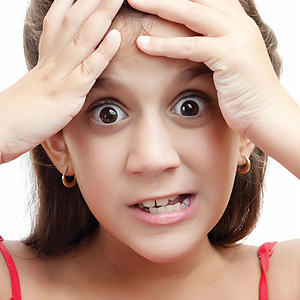
Teeth grinding is one childhood habit that sounds worse than it usually is: often the most harm done is to your night’s sleep. That said, though, it’s still a habit to keep your eye on.
Also known as bruxism, teeth grinding is so common among children that it’s considered normal behavior by many healthcare professionals. As for causes, some suggest a child’s immature neuromuscular chewing control may trigger it, while others point to the change from deeper sleep to a lighter stage as a possible cause. Problems like airway obstruction, medications or stress also seem to contribute to the habit.
For most children, teeth grinding usually fades by age 11 with no adverse effect on their teeth. If the habit extends into adolescence, however, there’s an increased risk for damage, mainly tooth wear.
This can happen because grinding often produces chewing forces 20-30 times greater than normal. Over time this can cause the biting surfaces of the teeth to wear and reduces the size of the teeth. While teeth normally wear over a lifetime, accelerated wear can pose a significant health risk to your teeth. Any sign of tooth wear in a child or adolescent is definitely cause for concern.
If your child’s tooth grinding habit appears to be developing into a problem, your dentist may recommend a few treatment options. The most common is a thin, plastic night guard worn in the mouth during sleep that prevents the upper and lower teeth from making contact. If the suspected cause is airway obstruction, they may refer you to an ear, nose and throat (ENT) specialist to seek treatment for that, as well as other professionals to help with managing stress or medications.
Like thumb sucking, the habit of teeth grinding usually ends with no permanent ill effects. But if you notice it continuing late into childhood or your dentist finds tooth wear or other problems, take action to avoid problems long-term.
If you would like more information on childhood bruxism, please contact us or schedule an appointment for a consultation. You can also learn more about this topic by reading the Dear Doctor magazine article “When Children Grind their Teeth.”